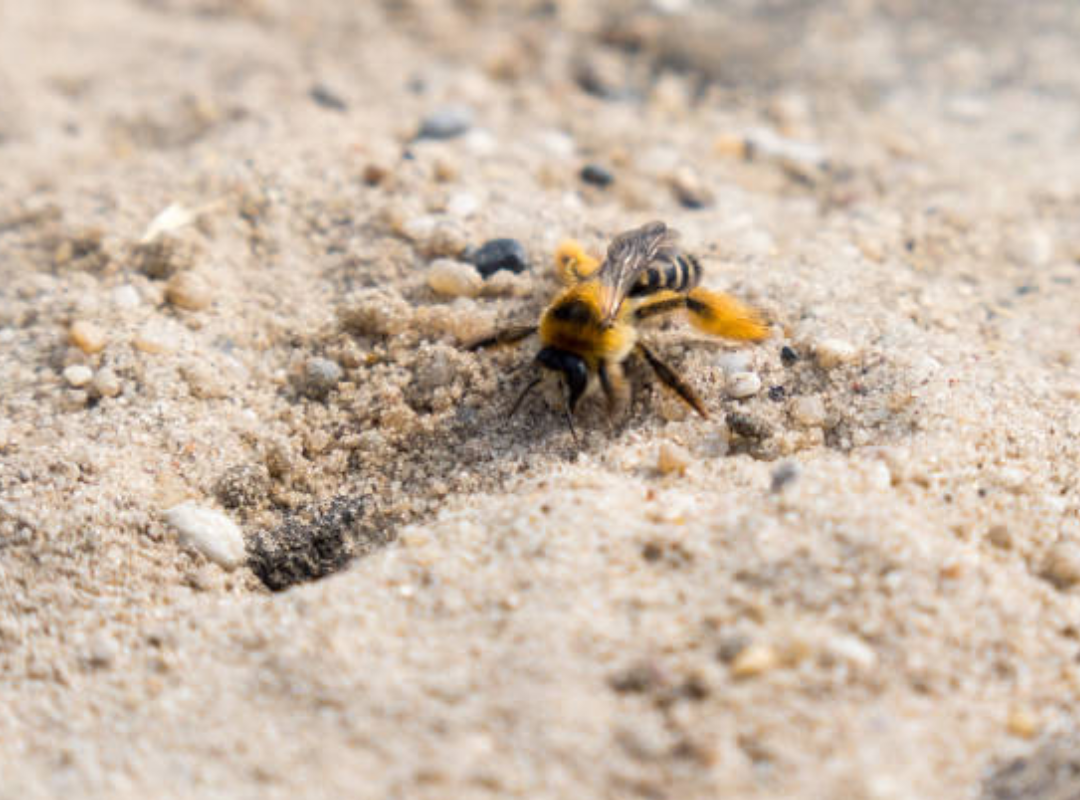
There’s nothing quite like the joy of watching kids play outside, especially in a sandbox where they can dig, build, and imagine. However, the discovery of bees in the sandbox can instantly turn playtime into panic. While bees are vital pollinators and generally non-aggressive, their presence in a sandbox creates a potential risk, particularly for children who may unknowingly disturb them. If you’ve noticed buzzing beneath the sand or seen bees frequently flying around, it’s time to take action. This guide will walk you through why bees choose sandboxes and how to safely reclaim the space for safe and fun play.
Why Are There Bees in the Sandbox?
Bees in the sandbox might seem unusual, but it’s more common than many homeowners realize. Certain solitary bees, such as miner bees, are naturally attracted to dry, sandy soil. Sandboxes, particularly those left uncovered, mimic ideal nesting grounds for these species. Unlike honeybees that live in hives, solitary bees burrow into the ground, and loose, warm sand provides the perfect medium for nesting. Additionally, the sandbox often receives plenty of sunlight, another attractive feature for bees. Understanding why bees choose this environment is the first step to safely removing them and preventing future nesting.
Spotting the Signs: Are Bees Nesting in the Sandbox?
Before jumping to conclusions, it’s important to confirm whether you’re truly dealing with bees in the sandbox or simply passing visitors. Frequent bee activity, small holes in the sand, and constant buzzing sounds may indicate ground-nesting behavior. If children have reported sightings or stings, that’s a sign to investigate further. Observing from a safe distance can help identify if bees are returning to a specific location, which usually means they’ve found a nesting spot. In such cases, contacting a professional like a Nashville bee relocation service ensures that the bees are moved humanely without harming children or pollinators.
Safe Steps to Remove Bees from the Sandbox
Once you’ve confirmed bee activity, removal must be handled delicately. Avoid disturbing the bees directly, as this could provoke them, especially if they feel threatened. The safest first step is to cordon off the area to keep children and pets away. Avoid using pesticides or chemicals—these not only harm bees but could also contaminate the sandbox. Instead, consider gently sprinkling the sand with water to make the environment less appealing, as most bees prefer dry ground. However, professional help is often the most effective and safe route for dealing with bees in sensitive areas like sandboxes.
Preventive Measures to Keep Bees Out
After removal, prevention becomes the priority. One of the most effective ways to stop bees from returning is by keeping the sandbox covered when not in use. A tightly fitted lid or tarp can eliminate access and keep the sand from drying out, which is less attractive to ground-nesting bees. Regularly turning or raking the sand disturbs potential nesting efforts before they start. You can also relocate the sandbox to a shadier spot, as bees prefer sunny, open areas. Taking these simple steps can drastically reduce the chances of seeing bees in the sandbox again.
Alternatives to Natural Sand and Their Benefits
If you’ve faced repeated issues with bees in the sandbox, it may be time to reconsider the material inside. Natural sand can be replaced with alternatives like rubber mulch or sanitized pea gravel. These materials don’t provide the same hospitable environment for burrowing bees, which makes them an effective long-term solution. Additionally, many synthetic sand options are hypoallergenic and cleaner, offering further benefits for children’s health and safety. Although these options might require an initial investment, the peace of mind they provide makes them worth considering, especially in homes with younger children.
Educating Children About Bee Safety
Children are naturally curious and may unknowingly provoke bees during play. Teaching them a few basic rules about bee behavior can help prevent accidents. Explain that bees are generally harmless if left alone and that they should avoid swatting or poking at them. Encourage children to report bee sightings to an adult and to avoid areas where bees are visibly active. Turning these moments into educational opportunities not only keeps your child safe but also instills respect for nature and pollinators. In doing so, you foster both safety and environmental awareness.
The Role of Bees and Why Humane Solutions Matter
It’s essential to remember that while bees in the sandbox are a problem, bees themselves are not the enemy. As pollinators, they play a crucial role in ecosystems and agriculture. That’s why humane, non-toxic removal methods are strongly recommended. Companies that specialize in relocation rather than extermination help preserve bee populations while ensuring safety. When dealing with bees in the sandbox or elsewhere on your property, choosing ethical solutions helps protect your family and the environment. It’s a responsible way to solve a problem without contributing to the ongoing decline in bee populations.
Conclusion
Bees in the sandbox are certainly an unexpected challenge, but with the right knowledge and steps, it’s a problem you can solve safely and humanely. From identifying bee activity and using safe deterrents to contacting relocation specialists and implementing long-term prevention, you have multiple tools at your disposal. Sandboxes should be a place of joy and imagination—not anxiety. By acting responsibly and taking simple precautions, you can restore your sandbox to a safe space where kids can play freely and families can enjoy peace of mind.